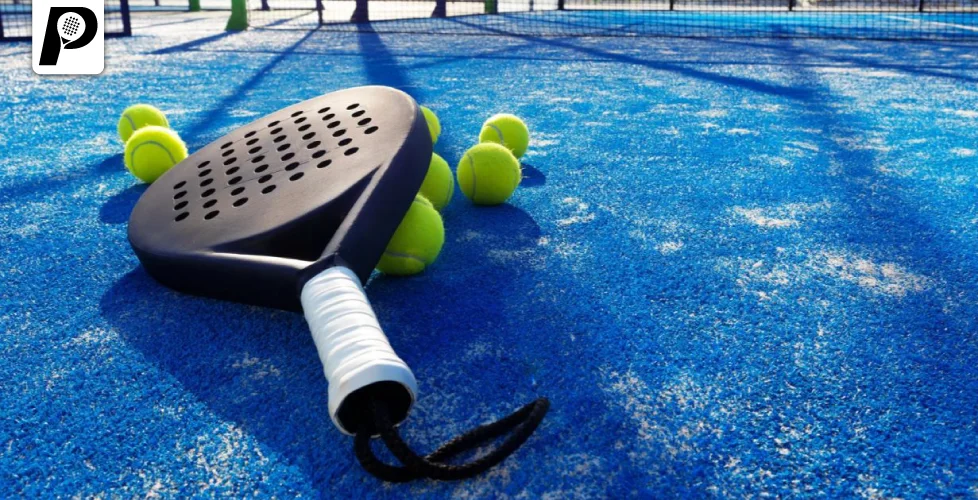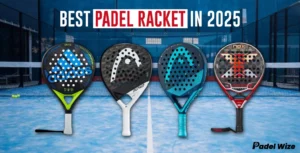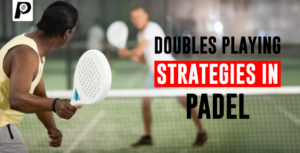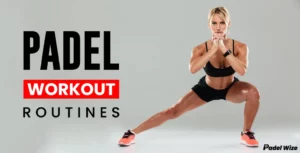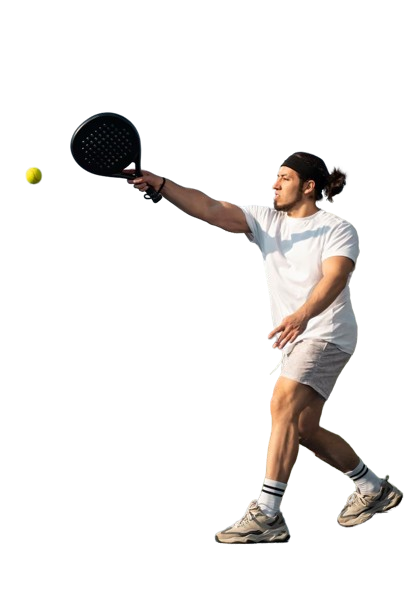Padel is a racquet sport that combines elements of tennis and squash. It’s played in a doubles format on an enclosed court, slightly smaller than a tennis court. Originating in Mexico, it has gained immense popularity in Spain and across the globe. This blog will delve into the equipment used, the rules of the game, and some effective strategies to excel at padel.
What is padel
Padel is played in a doubles format, making it a social and cooperative sport. It is easy to learn and suitable for players of all ages and skill levels. The game is fast-paced and exciting, combining the best elements of racquet sports.
It is a unique blend of tennis and squash, typically played in doubles on a compact court enclosed by walls made of glass and metallic mesh. The court is one third the size of a standard tennis court.
In this game, the ball is allowed to bounce off any of the walls but can only touch the turf once before being returned. Points are earned when the ball bounces twice within the opponents’ side of the court.
Related blog Mastering the Basics: A Beginner’s Guide to Padel Game
Equipment
When it comes to padel, having the right equipment is crucial for a successful game. From the racquet to the court shoes, each piece of gear plays a vital role in ensuring a competitive and enjoyable experience on the court.
Racquets
The racquet is a key piece of equipment that every player relies on for control and power during a match. With its unique design and functionality, choosing the right racquet can greatly impact your performance on the court.
Padel Racquets:
- Solid, perforated surface (no strings)
- Made from composite materials like carbon fiber or fiberglass
- Features a wrist strap for safety
Balls
In this game, the type of ball used can significantly affect the pace and dynamics of the game. Understanding the characteristics and qualities of padel balls is essential for a smooth and enjoyable play experience.
Padel Balls:
- Similar to tennis balls but with slightly less pressure
- Provide less bounce and more control for padel’s enclosed court environment
Court
The padel court is a distinctive and enclosed playing area that sets the stage for intense matches. With its glass walls and compact dimensions, the court creates a unique and fast-paced environment for players to showcase their skills and strategies.
Padel Court Dimensions:
Aspect Measurement Court Size 20m x 10m Net Height 88 cm at center, 92 cm sides Enclosure Glass walls and metal mesh fencing
The court is divided into two halves by a net, with service boxes and a smaller playing area than tennis courts.
Rules of the Game
Understanding the rules of game is essential for players to navigate the dynamic and strategic gameplay effectively. From scoring to court dimensions, a solid grasp of the rules ensures a fair and enjoyable experience on the court.
Scoring
Scoring System:
- Same as tennis (0, 15, 30, 40, game)
- Best of three or five sets, with six games to win a set
Serving
Serving is a fundamental aspect of padel that sets the tone for each point in a match. Mastering the techniques and strategies behind serving is vital for players aiming to gain an advantage and control the flow of the game.
Service Rules:
- Underhand serve from below the waist
- Serve diagonally into the opponent’s service box
- Two serve attempts per point
Gameplay
Padel offers an exhilarating and dynamic gameplay experience, combining elements of tennis and squash. With its fast-paced rallies and strategic shot placement, padel presents a thrilling and engaging challenge for players of all levels.
Gameplay Rules:
- Ball must bounce on the ground before hitting the glass walls
- Players can use the walls to return the ball, similar to squash
- Ball can only bounce once on each side
Features of Padel Compared to Tennis
Padel is heavily inspired by tennis, evident in its gameplay dynamics. Observing a padel match, one cannot overlook the resemblance to tennis, yet significant differences set the two sports apart. The primary distinction lies in the enclosed court design of padel. Below, we highlight further differentiating elements for you to consider.
- Padel court is smaller and lacks detailed line markings of a tennis court.
- Enclosed walls or fences are part of the padel court and affect gameplay.
- Padel rackets are smaller and not strung like tennis rackets.
- Padel uses smaller balls compared to tennis balls.
- The serve in padel is executed underarm, unlike the overhead serve in tennis.
- Padel focuses more on strategy rather than power, distinguishing it from tennis.
Related blog Padel vs. Tennis: Key Differences and Similarities
Padel tips for starters
For beginners in padel, focus on mastering the basic techniques, such as footwork, serves, and volleys, while also emphasizing communication and teamwork with your partner on the court.
- Familiarize yourself with the rules and scoring system of padel before getting started.
- Focus on improving your footwork and positioning on the court.
- Practice your serve technique, aiming for consistency and accuracy.
- Develop a good grip and control over the padel racket.
- Work on improving your volleying skills, as volleys are a crucial aspect of padel.
- Learn how to communicate effectively and coordinate with your doubles partner.
- Understand the importance of court awareness and positioning yourself strategically during rallies.
- Pay attention to your opponents’ shots and adapt your strategy accordingly.
- Regularly practice drills to improve your reflexes and reaction time.
- Enjoy the game and have fun while learning and improving your skills in padel.
Strategies for Success
Developing effective strategies is paramount for achieving success. From positioning and shot selection to teamwork, implementing sound strategies can elevate a player’s performance and competitive edge on the court.
Positioning
In game, proper positioning on the court is essential for maintaining control and effectively responding to opponents’ shots. Strategic positioning enables players to cover the court efficiently and capitalize on scoring opportunities.
Net Play:
- Control the net to dominate the game
- Position yourself to intercept volleys and smashes
Defensive Positioning:
- Stay back and prepare for lobs or defensive shots when necessary
Shot Selection
Mastering shot selection in padel is crucial for players to strategically place the ball, outwit opponents, and seize control of the game. Understanding when to execute different types of shots can greatly influence the outcome of a match.
Effective Shots:
- Volleys: Quick shots near the net to maintain pressure
- Lobs: High shots to push opponents back and regain net control
- Smashes: Powerful overhead shots to end the point
Communication
Communication is key in this game, as it allows players to coordinate their movements, plan strategies, and anticipate their partner’s actions. Effective communication on the court enhances teamwork and maximizes the chances of success in each point.
Teamwork:
- Constant communication with your partner is crucial
- Call shots and positions to avoid confusion and maximize effectiveness
Related blog A Comprehensive Guide to Padel Training
Conclusion
Padel is a dynamic and enjoyable sport that combines strategy, skill, and teamwork. With the right equipment and an understanding of the rules and strategies, players can improve their game and enjoy the social aspects of this growing sport. Whether you are a beginner or an experienced player, there’s always something new to learn in padel.

